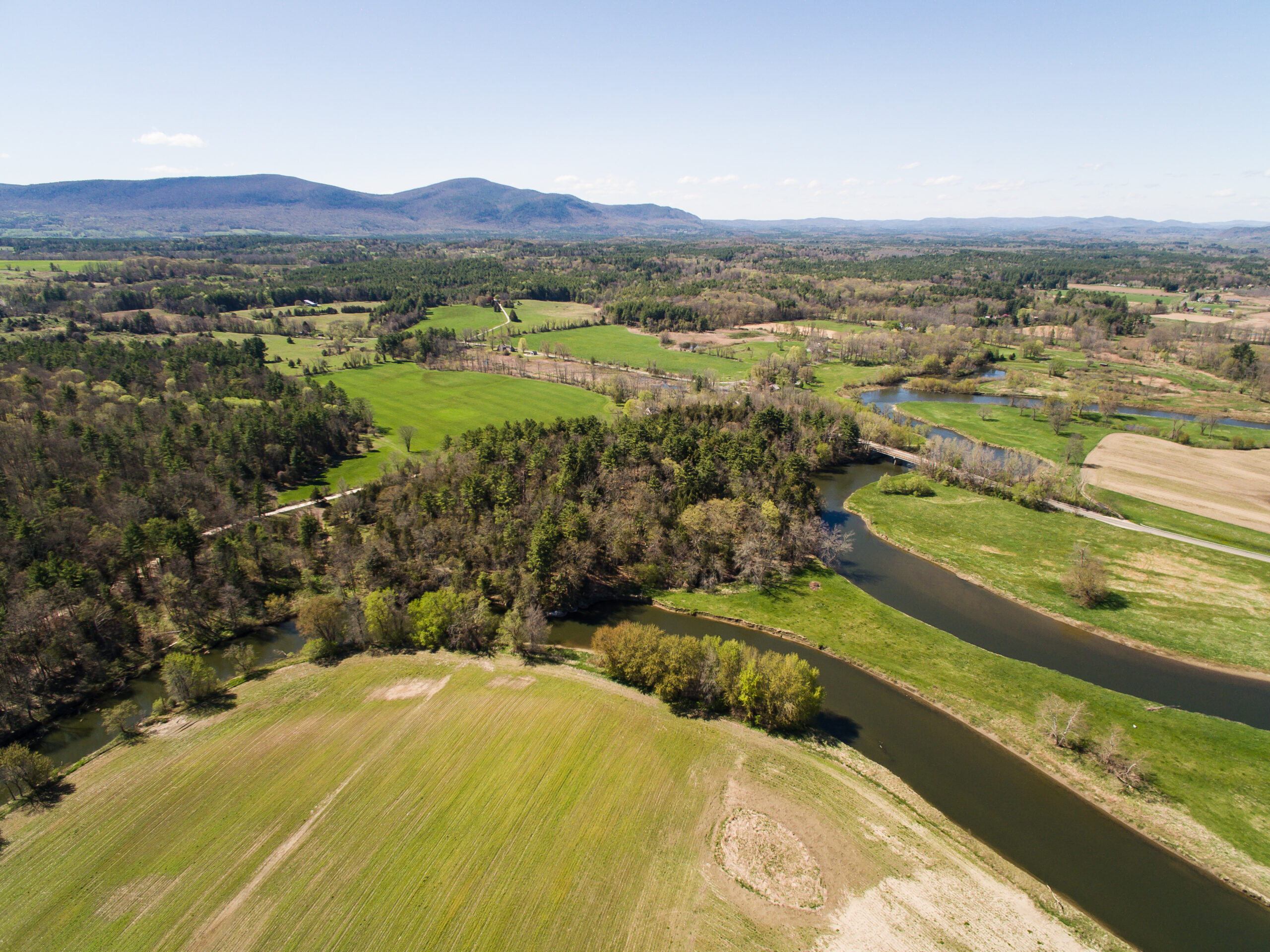Trustees Quest
Bartholomew's Cobble
Congratulations! You’ve found the Bartholomew’s Cobble Quest.

You’re now standing in front of one of the largest Cottonwood trees in the state! The tree is approximately 125 feet tall—that’s more than 12 basketball hoops stacked on top of each other! Cottonwood trees are often found growing in floodplains near streams and rivers. You’ll notice a large portion of this tree broke off and is now lying on the forest floor. These logs are a prime spot to sit and enjoy a view of the Housatonic River. Look around you – can you spot any ferns? This property has one of North America’s greatest diversities of fern species!
There’s more to do and see! Keep scrolling…
- Activity Ideas
- Explore More
- History Tidbits
- Property Map
Activity Ideas
Be a tree investigator. Take a few minutes to walk around and investigate this Cottonwood tree. How deeply furrowed is the bark? Do you see any unique markings on the tree?
Peek into the large hole at the base, but don’t climb in or you might get stuck.
Look to see where the large limb fell from.
How do you think Cottonwood trees got their name?
Foresters use measurements and observations to age trees and assess their health. Let’s see how large this cottonwood tree is. Stretch your arms around the trunk of the tree. You might need a few people to cover the whole trunk. How wide do you think this tree is? Use a string or tape measure to measure the circumference, then lay the string out and see how many steps it is. Compare the length to your height!
Measure other trees in the area – what is the size difference?
Can you find other cottonwood trees? Look for similar leaf shapes, or for the deeply furrowed bark.

Courtesy snr.unl.edu
Beavers love to eat cottonwood trees – do you see beaver chewed stumps?
Sit quietly and observe – what do you hear, see, smell, or feel? Think about what may have been happening in history when this tree was just a small sapling. How does this compare with other Trustees Quest sites you’ve visited? What are you experiencing that you don’t where you live?
Explore More
Bartholomew’s Cobble is a National Natural Landmark. There are many unique features to explore and discover. Can you find the two rocky knolls (or “cobbles”) that rise above the Housatonic River? These formations are what give Bartholomew’s Cobble its name.
As you explore more, count how many different landscapes you see on your journey. Open fields, forests, marshes, small caves… (click here for a property map).
From the Cottonwood tree you can follow the Spero Trail along the river exploring the restoration work happening in the floodplain.
When you head back towards the Visitors Center, be sure to take the Ledges Trail to see the variety of Spring Ephemerals. April and May are the prime months to see these unique wildflowers. (click here for list of flowers).
Don’t forget to climb Hurlburt’s Hill! The property’s highest point rises 1,000 feet to a 20-acre field on the Massachusetts-Connecticut border with beautiful views of the Housatonic River Valley. Did you know you can step into Connecticut? This field is a great place to observe birds including bobolinks wearing their black and white tuxedos, bluebirds and tree swallows using the bird boxes along the path, and pileated woodpeckers hammering the dead trees along the field edge. In the fall, look for migrating birds of prey – hawks and more – soaring above the open hillside.
History Tidbits
The reservation is named for George Bartholomew, a farmer who purchased the fields and uplands in the late 19th Century. But more than a hundred years earlier, Col. John Ashley had gathered together a sprawling estate of which the current reservation was only a part. The Trustees acquired the Cobble in 1946; Ashley’s home, also owned by the Trustees, still stands on nearby Cooper Hill Rd. Today this reservation is a Natural National Landmark, meaning it has been recognized nationally for its outstanding natural resources.



